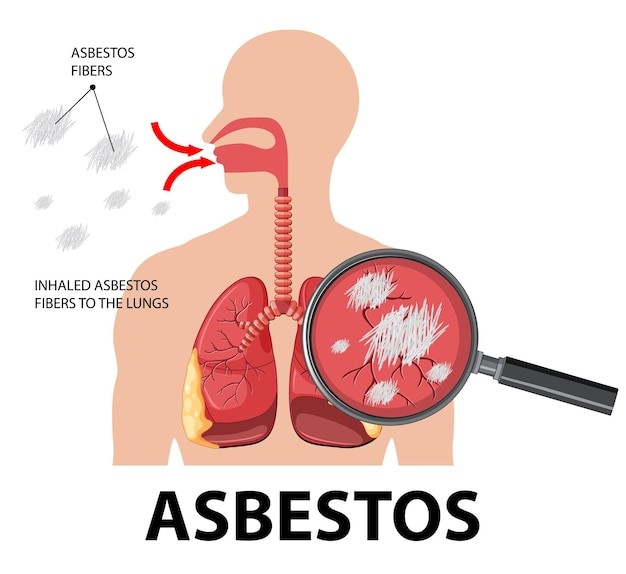
Imagine working in an industry where every breath you take could harm your lungs. Due to the presence of asbestos, this is a harsh reality for many workers in construction, shipbuilding, and other trades. Asbestosis, a chronic lung condition, is a silent yet severe consequence of prolonged asbestos exposure. Those in danger and their loved ones must comprehend what causes asbestosis and how to discover it.
Understanding the Causes of Asbestosis
Asbestosis is caused by the inhalation of tiny and durable asbestos fibers that are resistant to heat. Once in the air, these fibers can be breathed in and lodged in the lung tissues. The inflammatory properties of these fibers eventually cause fibrosis, or the scarring of lung tissue. This scarring can make the lungs rigid, lowering blood oxygen levels and making breathing difficult.
The longer and more intense one’s exposure to asbestos, the higher the risk of acquiring asbestosis. Workers in construction, shipbuilding, and the manufacturing of asbestos products are particularly vulnerable. Secondary exposure from fibers carried home on clothing can expose the workers’ family members to danger.
Legal Recourse and Protection
If you or a loved one has been diagnosed with asbestosis, it’s essential to understand your legal rights. Occupational negligence or a lack of proper safety measures often results in asbestos exposure. It may be necessary to hire asbestosis lawyers to navigate the complex legal landscape and seek compensation for medical expenses, lost wages, and pain and suffering. Experienced attorneys can help prove negligence and ensure those responsible are held accountable.
Detecting Asbestosis
Early detection of asbestosis can be challenging due to the gradual onset of symptoms. Symptoms often do not appear until many years after exposure. Common symptoms include the following:
- Shortness of Breath: Initially noticeable during physical activity, it can progress to occur even at rest.
- Persistent Cough: A chronic cough that doesn’t go away and may produce mucus.
- Chest Tightness: A constrictive or pressing sensation in the chest.
- Finger Clubbing: Swelling and rounding of the fingertips.
- Fatigue: Constant tiredness that affects daily activities.
It’s critical to get medical help if you have a history of asbestos exposure and any of these symptoms. A prompt diagnosis aids in symptom management and slows the course of the illness.

Medical Diagnosis
There are usually multiple processes involved in diagnosing asbestosis. Let us discuss a few:
- Medical Background Information and Physical Assessment: Your doctor will review your work history and symptoms.
- Imaging Tests: Chest X-rays and CT scans can reveal lung abnormalities indicative of asbestosis.
- Lung Function Tests: These tests measure the capacity and efficiency of your lungs, helping assess the extent of damage.
- Biopsy: In some cases, a biopsy may be needed to confirm the presence of asbestos fibers in the lung tissue.
Preventive Measures and Awareness
Prevention is key when it comes to asbestosis. Employers must adhere to safety regulations, such as providing proper protective equipment and conducting regular asbestos risk assessments. Employees need to be taught safe handling techniques and informed about the risks associated with asbestos.
Conclusion
Understanding the origins and detection methods becomes paramount when it comes to asbestosis. Legal frameworks are crucial in holding those responsible for asbestos exposure accountable and offering avenues for compensation and justice.
Vigilance in recognizing symptoms and seeking medical evaluation is imperative for early detection and intervention. By advocating for stringent regulations and prioritizing public health initiatives, society can mitigate the devastating impact of this silent but deadly disease, ensuring a safer future for all.



Facebook Comments